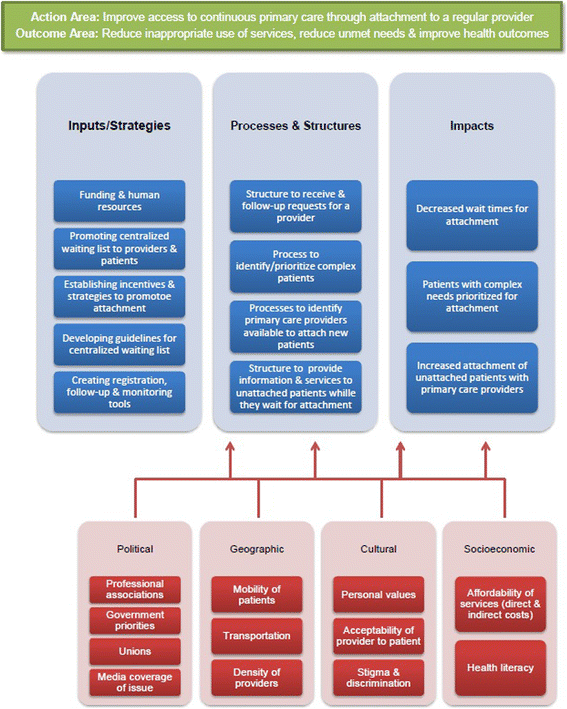A comparative analysis of centralized waiting lists for patients without a primary care provider implemented in six Canadian provinces: study protocol
- PMID: 28109279
- PMCID: PMC5251310
- DOI: 10.1186/s12913-017-2007-8
A comparative analysis of centralized waiting lists for patients without a primary care provider implemented in six Canadian provinces: study protocol
Abstract
Background: Having a regular primary care provider (i.e., family physician or nurse practitioner) is widely considered to be a prerequisite for obtaining healthcare that is timely, accessible, continuous, comprehensive, and well-coordinated with other parts of the healthcare system. Yet, 4.6 million Canadians, approximately 15% of Canada's population, are unattached; that is, they do not have a regular primary care provider. To address the critical need for attachment, especially for more vulnerable patients, six Canadian provinces have implemented centralized waiting lists for unattached patients. These waiting lists centralize unattached patients' requests for a primary care provider in a given territory and match patients with providers. From the little information we have on each province's centralized waiting list, we know the way they work varies significantly from province to province. The main objective of this study is to compare the different models of centralized waiting lists for unattached patients implemented in six provinces of Canada to each other and to available scientific knowledge to make recommendations on ways to improve their design in an effort to increase attachment of patients to a primary care provider.
Methods: A logic analysis approach developed in three steps will be used. Step 1: build logic models that describe each province's centralized waiting list through interviews with key stakeholders in each province; step 2: develop a conceptual framework, separate from the provincially informed logic models, that identifies key characteristics of centralized waiting lists for unattached patients and factors influencing their implementation through a literature review and interviews with experts; step 3: compare the logic models to the conceptual framework to make recommendations to improve centralized waiting lists in different provinces during a pan Canadian face-to-face exchange with decision-makers, clinicians and researchers.
Discussion: This study is based on an inter-provincial learning exchange approach where we propose to compare centralized waiting lists and analyze variations in strategies used to increase attachment to a regular primary care provider. Fostering inter-provincial healthcare systems connectivity to improve centralized waiting lists' practices across Canada can lever attachment to a regular provider for timely access to continuous, comprehensive and coordinated healthcare for all Canadians and particular for those who are vulnerable.
Keywords: Comparative study; General practitioners; Health services accessibility; Physician patient relationship; Physicians; Primary health care; Unattached patients; Waiting lists.
References
-
- Karazivan P. La médecine familiale vue par les jeunes omnipraticiens: rejet de la vocation et de la continuité des soins. Montréal: Université de Montréal; 2010.
-
- Jatrana S, Crampton P, Richardson K. Continuity of care with general practionners in New Zealand: results from So-FIE-Primary care. J N Z Med Assoc. 2011;124(1329):286–96. - PubMed
Publication types
MeSH terms
Grants and funding
LinkOut - more resources
Full Text Sources
Other Literature Sources


